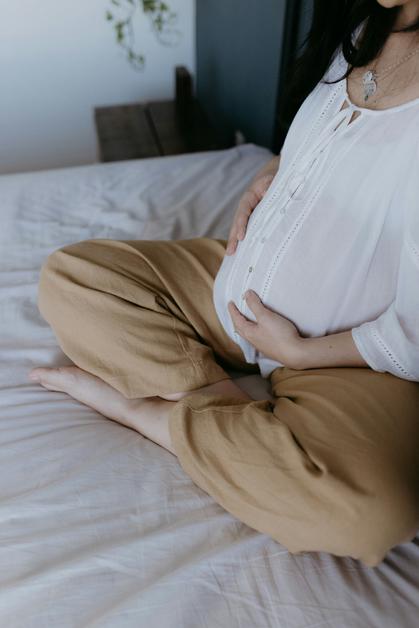Experiencing a yeast infection during pregnancy can create a whirlwind of concerns—worry about your own comfort, your baby’s wellbeing, and those persistent, almost mysterious symptoms. Vaginal discomfort, unexpected itching, and that unmistakable thick white discharge? The emotional weight can intensify during pregnancy, when every change feels amplified. For many parents, questions swirl: Is this normal? Will it harm the baby? What is actually safe to use? Fortunately, clear answers exist, blending the latest in medical understanding with practical solutions. Let’s dig deeper into the science behind yeast infection during pregnancy, the signals to watch for, and actionable, evidence-based steps you can trust.
Understanding Yeast Infection During Pregnancy: What’s Actually Happening?
Yeast infection during pregnancy—often referenced in medical terms as vaginal candidiasis—emerges when a usually harmless fungus, typically Candida albicans, grows unchecked in the vaginal environment. It’s a familiar scenario: pregnancy drives profound hormonal shifts, notably surges in estrogen and progesterone. These changes set the stage for a chain reaction:
- The vaginal flora—your natural community of protective bacteria—becomes disrupted, sometimes allowing Candida to dominate.
- Increased vaginal glycogen (basically sugar stored in vaginal tissues) provides abundant fuel for yeast.
- Changes in immunity play a part, subtly tweaking your body’s ability to keep fungal growth under control.
So why do these biological events lead to a yeast infection during pregnancy? The interplay between hormonal surges, altered vaginal acidity (pH), and changes in protective bacteria create fertile ground for yeast. Add to this mix any additional factors—taking antibiotics, diabetes, warm or synthetic underwear, even heightened stress—and the risk can climb higher.
When the Body Speaks: Recognizing Symptoms and Red Flags
How does a yeast infection during pregnancy actually feel? The signs may be subtle at first, then intensify swiftly:
- Intense vulvar and vaginal itching, often so persistent it disrupts daily life or sleep.
- Burning, particularly noticeable when urinating.
- Redness and swelling—sometimes marked enough to cause physical discomfort or pain during intercourse.
- A distinctive thick, white, curd-like discharge. Imagine the texture of cottage cheese: lumpy, yet notably without a strong odor.
- Occasional discomfort that’s hard to pinpoint, sometimes accompanied by rawness.
Notably absent from the picture: foul-smelling, yellow, or green discharge; those symptoms point in a different direction entirely—think bacterial vaginosis or certain sexually transmitted infections. If itching remains relentless, pain worsens, or the discharge changes color or scent, seeking out your doctor promptly is a wise step.
Medical Evaluation: Why It Matters More Than Guesswork
It’s tempting—sometimes overwhelmingly so—to reach for leftover medication or OTC creams, especially when symptoms strike at inconvenient hours. Yet precise evaluation matters deeply during pregnancy. Healthcare providers offer more than reassurance: through a targeted vaginal swab or microscopic analysis, they can confirm Candida and rule out other culprits. Sometimes, checking vaginal pH clarifies if it’s a yeast infection, bacterial imbalance, or both tangled together.
Why is an accurate diagnosis so significant? Certain antifungals (particularly systemic, oral medications) are considered off-limits during pregnancy due to potential risks. Trust a healthcare provider to direct you toward safe local therapies—protecting both your comfort and your baby. Left unfixed, misdiagnosed symptoms may delay relief or allow complications to surface later.
Safe Treatment Strategies: What Science Recommends
Feeling lost in a sea of treatment options? The good news: yeast infection during pregnancy is typically managed with well-studied, pregnancy-safe remedies.
- Topical antifungal creams or vaginal suppositories, such as clotrimazole or miconazole, are the cornerstones. Regimens vary—3 to 7 days is standard, dictated by how severe symptoms are.
- Oral antifungals (like fluconazole) are rarely used, only under strict medical guidance, and typically reserved for severe, recurrent cases.
- Sometimes, if recurrences persist, treating your sexual partner might help break the cycle, but this isn’t always necessary.
- Completion of the full therapy is vital—even if you’re feeling better halfway through. Stopping short risks a swift comeback of symptoms.
Curious about natural remedies—yogurt, garlic, or essential oils? While many anecdotes float around, robust clinical evidence remains weak. Most experts advise sticking with scientifically validated treatments, especially during pregnancy, when the margin for safety is slimmer.
Daily Life and Prevention: Small Changes, Real Impact
Can everyday choices really tip the balance in favor of vaginal health during pregnancy? Research says yes. Consider these evidence-backed tips:
- Opt for cotton underwear and swap out synthetic, tight styles for breathable comfort.
- Wash underwear at high temperatures to destroy lingering fungi.
- After bathing, dry the vulvar area thoroughly, minimizing moisture that yeast loves.
- Hold off on long soaks in baths or hot tubs—heat and water exposure can encourage yeast growth.
- Limit refined sugars; yeast thrives in sweet environments.
- Avoid douching or using scented products on sensitive areas, which disrupt the protective flora.
- Probiotics may have a restorative effect on vaginal microbiota, but always check with your healthcare provider first. Not all strains are effective, and medical supervision ensures safety.
Are these steps foolproof? Not entirely—but they shift the odds noticeably, reducing both initial infections and annoying recurrences.
How Widespread Is Yeast Infection During Pregnancy?
Statistics often surprise parents: between 20% and 40% of pregnant women will face at least one yeast infection during pregnancy. Peaks occur in the second and third trimesters, when hormonal shifts intensify. Those with a previous track record of yeast issues, diabetes, recent antibiotic use, or dietary patterns high in sugar find risks rising further.
Possible Complications: What Should Parents Watch For?
Most yeast infections during pregnancy bring discomfort, not danger. Still, understanding the outliers is empowering:
- Skin irritation can, by sheer persistence of scratching, open pathways for other infections.
- Babies exposed to Candida during birth may temporarily develop oral thrush or a mild diaper rash—unsettling, perhaps, but very treatable.
- In exceptionally rare instances, severe infection can contribute to localized inflammation, potentially triggering preterm contractions—but for the vast majority, this remains a distant possibility rather than the norm.
If episodes repeat or symptoms grow severe, medical reevaluation is always the right move.
Reducing Recurrence: What If It Keeps Coming Back?
Some parents face not just one yeast infection during pregnancy, but a frustrating cycle. The causes? Sometimes incomplete treatment, fluctuating hormones, repeated antibiotic courses, or overzealous hygiene. Research-backed strategies to break the loop include:
- Opt for loose, breathable attire.
- Practice gentle cleansing—water or pH-neutral cleansers are enough.
- Limit sugars in your daily diet.
- Always finish treatments prescribed by your provider; half-measures invite rebound symptoms.
- In certain cases, partner treatment thwarts reinfection, especially if both partners have symptoms.
Occasionally, ongoing Candida flare-ups may prompt longer-term or periodic preventative courses, guided by your doctor. Persistent recurrences should always prompt an evaluation to rule out underlying medical factors.
Postpartum and Breastfeeding: Does Yeast Play by New Rules?
After childbirth, the risk for a yeast infection during pregnancy typically lessens. However, breastfeeding introduces its own chapter: some mothers experience nipple yeast infections—symptoms include sudden nipple pain, redness, or a sharp, burning quality after feeds. Babies may show oral thrush, recognized by creamy white spots inside the mouth. The solution?
- Safe, topical antifungals (clotrimazole, miconazole) are usually recommended for mothers.
- Babies may need an oral antifungal solution, like nystatin.
- Treatment works best when both mother and baby are managed at the same time to avoid “ping-pong” transmission.
- Best practices? Clean and air-dry nipples, use fresh, cotton pads, and consult your provider quickly if symptoms appear.
When to Seek Medical Attention
Questions often arise: when is it time to call a doctor? Clear signals include:
- Symptoms that persist or worsen, especially after self-treatment attempts.
- New or severe irritation, redness, discharge that changes in odor or color.
- Frequent recurrences over a short period—a sign that another condition may be present.
- Any indication that your baby is experiencing oral thrush or ongoing rashes.
Information is helpful; direct contact with a skilled professional remains invaluable for unique cases.
Key Takeaways
- Yeast infection during pregnancy is a frequent, well-understood challenge triggered by hormonal and microbial shifts in the vaginal environment.
- Hallmark signs include intense itching, thick white discharge with a cottage cheese appearance, and persistent discomfort.
- Medical diagnosis ensures both correct identification and access to safe, evidence-based treatments (topical antifungals as the mainstay).
- Everyday strategies—breathable clothing, careful hygiene, a reduction in sugary foods, and (when medically approved) probiotics—aid both prevention and comfort.
- Most cases resolve without significant danger, but consulting a healthcare provider is essential for new, persistent, or unclear symptoms.
- Professional guidance is never out of reach; consider using the Heloa app for tailored support, free health questionnaires for children, and reliable updates—designed to empower you on your parenting journey, every step of the way.
Questions Parents Ask
Can a yeast infection affect my baby during pregnancy?
You may wonder if a yeast infection could have an impact on your baby’s health before birth. Rassurez-vous, for most parents, a vaginal yeast infection during pregnancy remains a local issue—Candida rarely affects the baby in utero. The main time your baby might encounter Candida is during birth, which could lead to mild oral thrush or a diaper rash, both very manageable. Il convient de consulter votre médecin si vous observez des symptômes inhabituels, mais en général, la santé de votre bébé n’est pas compromise par une simple infection à levures pendant la grossesse.
Is it safe to use over-the-counter antifungal treatments while pregnant?
It’s natural to feel uncertain about which treatments are safe. Generally, many over-the-counter antifungal creams or suppositories (like miconazole or clotrimazole) are considered safe throughout pregnancy. However, il est important de demander conseil à votre professionnel de santé avant de commencer tout traitement, même ceux en accès libre. This ensures you receive the right diagnosis and the best care for you and your baby.
When should I consult my doctor about a yeast infection while pregnant?
Feeling unsure about when to seek help is very common. You can consult your doctor dès que les symptômes commencent à gêner votre quotidien : persistent itching, burning, or changes in discharge. If symptoms persist after using a treatment, or if you notice any unusual odors or colors, reach out without hesitation. Your comfort and peace of mind are essential—never hesitate to connect with a healthcare professional for support and answers.










